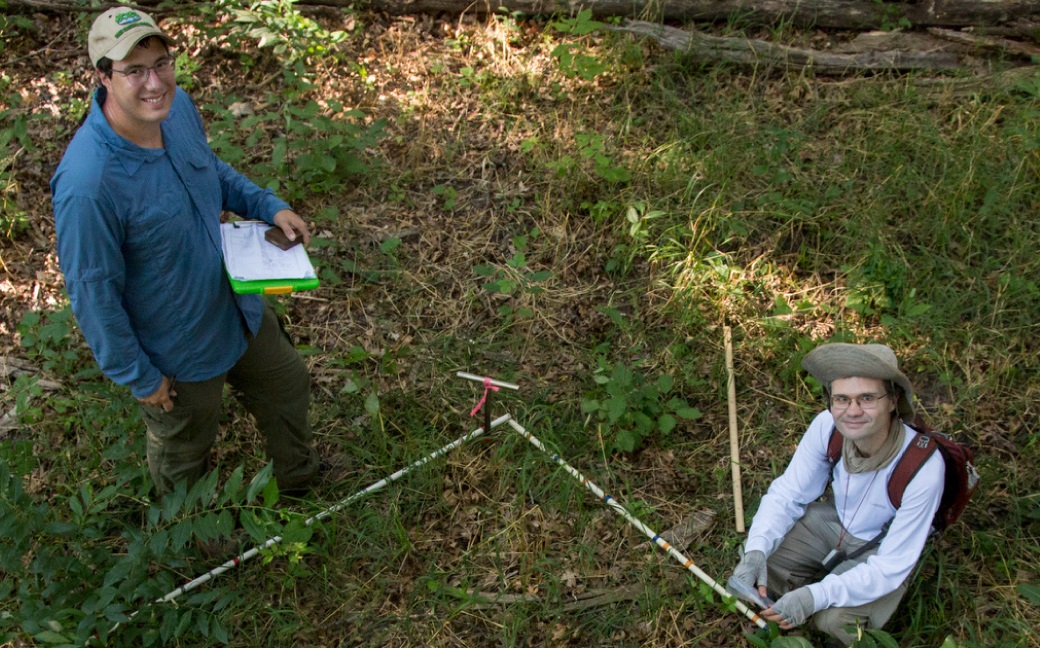Project completed in 2019
Background
Buckthorn is an invasive shrub that outcompetes native plants and degrades Minnesota forests. Minnesotans spend millions each year removing buckthorn from their properties, yet owners find the invasive shrub returning to the same spots again and again. Removal of buckthorn is a common management activity, but often only provides short-lived benefits since buckthorn rapidly re-establishes.
In grasslands, heavily seeding native species can often restore native communities and inhibit invasion, but this approach is rarely used in forest management (Schuster et al. 2018). This research team investigated whether they could similarly establish enough native plants to prevent buckthorn from re-establishing in forests.
Research questions
- What native planting techniques can reduce the recurrence of buckthorn after removal?
- How much shade is needed to prevent buckthorn from thriving?
Practical implications
This work could change the way we think about buckthorn management, helping Minnesota land managers save significant time and money in their long-term restoration efforts.
Outcomes
During phase 1 of this project, the research team developed strategies to improve and diversify the native plant community while keeping buckthorn away for good. Together with more than 12 local partner organizations, they found that native grasses, wildflowers, sedges, ferns, and juvenile trees can provide enough shade to prevent new buckthorn growth.
The project illustrates that it is possible to curate native plant communities in a way that makes them resistant to buckthorn invasion. In general, they recommend that forests be managed to promote the establishment of shrubs and trees that provide heavy shade in the spring and fall. Their findings suggest that by doing so, managers can simultaneously increase forest health, inhibit invasion, and reduce the need for investment in future buckthorn removals.
Publications
- Increased light availability due to forestry mowing promotes regeneration of invasive European buckthorn (Restoration Ecology, 2020)
- Phenology matters: extended spring and autumn canopy cover increases biotic resistance of forests to invasion by common buckthorn (Rhamnus cathartica) (Forest Ecology and Management, 2020)
- Revegetation to slow buckthorn reinvasion: strengths and limits of evaluating management techniques retrospectively (Restoration Ecology, 2020)
- Using revegetation to suppress invasive plants in grasslands and forests (Journal of Applied Ecology, 2018)
- Invasive plants in Minnesota are “joining the locals”: A trait-based analysis (Journal of Vegetation Science, 2018)
- A tale of two studies: Detection and attribution of the impacts of invasive plants in observational surveys (Journal of Applied Ecology, 2017)
News and media
- U of M Center battles hungry invasives (Pioneer Press, 2019)
- Grow with Kare: Be a citizen scientist and fight buckthorn! (Kare 11, 2019)
- Battling buckthorn to restore natural resistance (Science Museum of Minnesota, 2017)
Outreach and presentations
- 2019 Gathering Partners Conference
- 2019 Duluth Cooperative Invasive Species Management Area
- 2019 Duluth Invaders R2ED Team
- 2018 UMN Undergraduate Research Symposium
- 2018 Upper Midwest Invasive Species Conference
- 2018 St. Croix Research Rendezvous
- 2018 Legislative-Citizen Committee on Minnesota Resources
- 2018 Metropolitan State University Natural Sciences Seminar
- 2017 MITPPC Buckthorn Symposium
- 2017 Floodplain Forests Group
- 2016 Upper Midwest Invasive Species Conference
